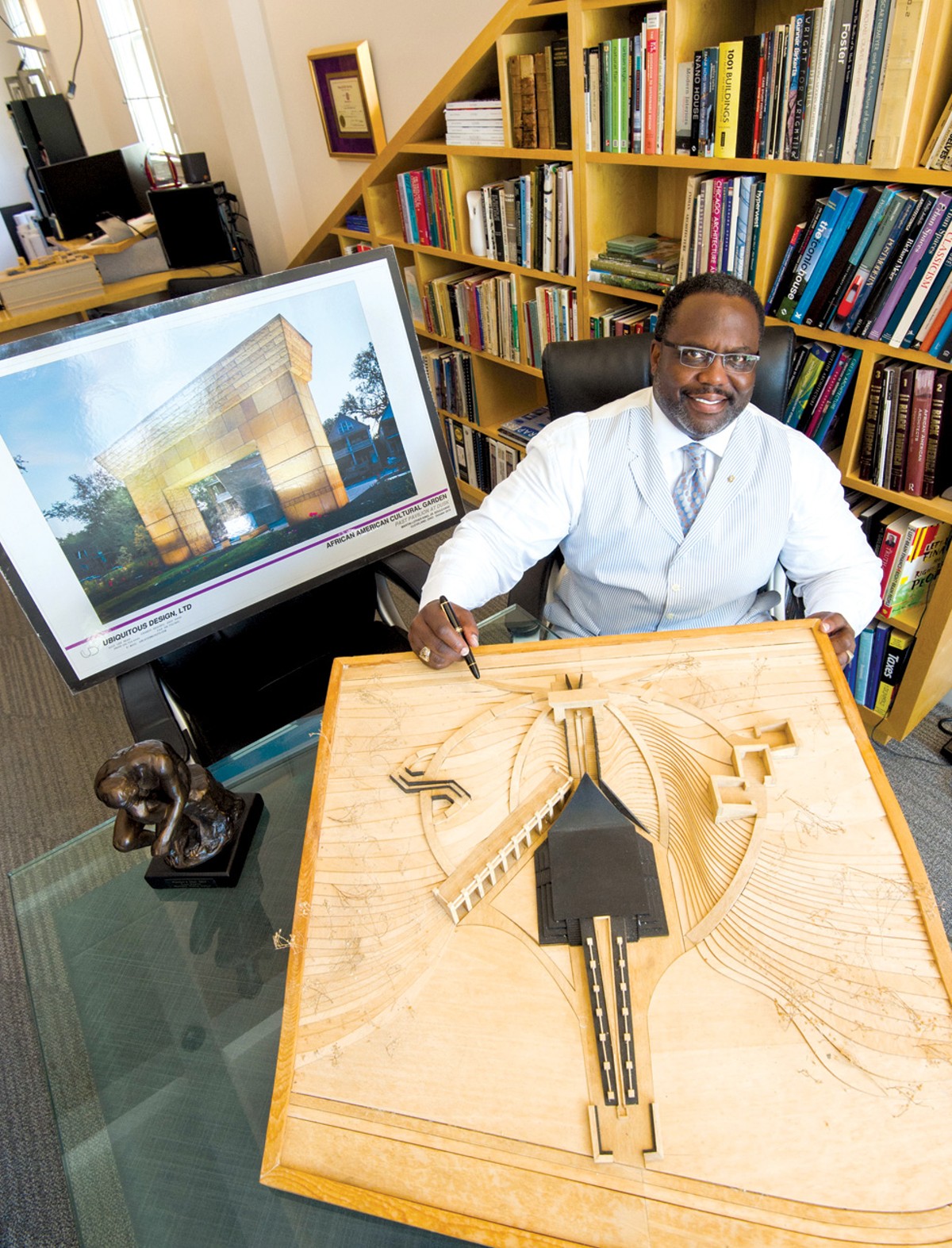When architect Daniel Bickerstaff realized, with a start, that he wasn't just on the design subcommittee for the African-American Cultural Garden, he was in charge of spearheading the design, he went six months without picking up a pencil.
"That's unheard of for me," says the Shaker Heights resident, speaking at a conference table in his firm's office on Lee Road. "But I really wanted to understand this dual citizenship — this idea of being both African and American — before I put my ideas down."
Bickerstaff says during his extensive research of the harrowing Middle Passage and the experience of African-Americans in the United States, he would often find himself weeping at his computer screen.
"I'm a big guy, 285 pounds," says Bickerstaff, "but it was that emotional."
Bickerstaff, whose father is from Alabama, says he never discussed race with his family but that he sees the importance — no, the necessity — of doing so. "Just like our Jewish brothers and sisters," he says, "this country must embrace and express our history, even the awful parts. In doing so, we pay respect to those who survived. That's why I'm sitting here in this air-conditioned office."
Bickerstaff grew up in Hough (the 8200 block of Superior) and attended Cleveland public schools until the 10th grade, when he won a scholarship and finished high school in Boston. Afterward, he attended Washington University in St. Louis to study architecture, in defiance of a prominent professor who encouraged him to switch to social work. Energized, and proud of his academic accomplishments, he returned to Cleveland in 1986. After working in the private sector for a few years, he worked in the city's planning office. He was Mayor Michael White's chief architect before he set out on his own in 2002.
Since that time, his firm, Ubiquitous Design, LTD, has worked on an array of local projects. Bickerstaff has a passion for historic preservation and designed the Men's retail clothing store at Clifton Boulevard and Lake Avenue that used to be a BP gas station. He designed the red and metallic contemporary condos on Brayton Avenue in Tremont. He has designed churches and hotels and local parks.
(In case you're wondering — we couldn't resist asking — Bickerstaff's favorite building in Cleveland is the Terminal Tower. He worked there fresh out of college and has fond memories of, among other things, the fountain. He says he looks forward to what Tower City can be again, now that a sufficient downtown population exists to patronize the businesses there.)
But his crown jewel remains the cultural garden. Though only the $600,000 first phase of the $2.5 million project is complete, the finished portion is already an important symbol for Cleveland's African-American community. The garden was originally dedicated in 1977, but a committee to raise funds and build the memorial wasn't established until 2003.
The completed portion includes a large archway and a black corridor that signifies the Doorway of No Return in West Africa.
"These are torturous things we're representing," Bickerstaff says, of his concept, "but I wanted the design to be beautiful, to be elegant, and to be something we're proud of as a community."
Bickerstaff says the fundraising for the remaining phases is ongoing, and that he'll be involved until the final stone is laid.
"For me," he says, "it's a labor of love." — Sam Allard










